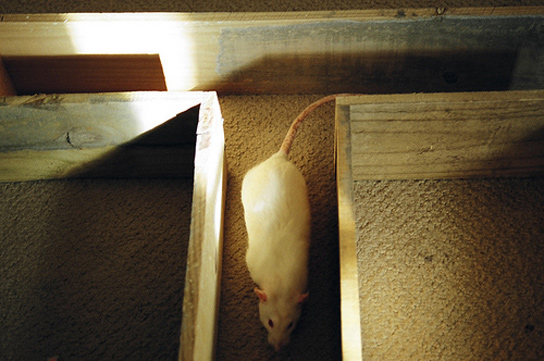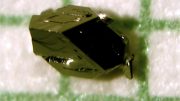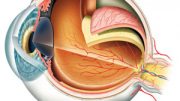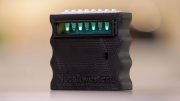
Habits require ongoing supervision from the infralimbic cortex (ILC) and other brain areas. They’re ingrained but can be precisely controlled and disrupted. Credit: Image by Roland
The addition of a light-sensitive protein to a small part of a rat’s brain allowed researchers to silence the neurons in the infralimbic cortex (ILC) with a flash of yellow light, delivered to the rat’s brain via an optic fiber. The light flashes for three seconds and the habit disappears.
The scientists published their findings in the journal PNAS. While habits seem automatic, they still depend on an ongoing supervision from the ILC and other parts of the brain. They are ingrained, but subject to precise control. And they can also be disrupted.

The researchers were stunned by how immediate these effects were. The change in activity of this small cortex area can profoundly change how habitual behavior was, in a matter of seconds.
Scientists have already identified other parts of the brain responsible for habits, but previous experiments have been a bit less refined than this light-based alternative.
Optogenetics takes light-sensitive proteins and uses viruses to introduce them to an animal’s neurons. By choosing the right proteins and targeting the right part of the brain, scientists can excite or silence a chosen group of neurons with precision.
The flash of light doesn’t wipe the rat’s memory. Instead, it disrupts the ILC and restores the importance of outcomes in the rat’s decision-making. Before the flash of light, it ran wherever the ingrained habit told it to go. Now, it weighs up what happens when it reaches its destination.
The ILC acts like a behavioral overseer that toggles between different habits. The old ones are still encoded in neural networks, but the overseer ignores these in favor of new ones. Behaviors can be stacked over each one another, and the ILC promotes the one that is the most appropriate to the current environmental conditions.
The ILC isn’t directly connected to the putamen or striatum, other parts of the brain involved in habits, so it’s hard to say why infralimbic inactivation works.
Reference: “Reversible online control of habitual behavior by optogenetic perturbation of medial prefrontal cortex” by Kyle S. Smith, Arti Virkud, Karl Deisseroth and Ann M. Graybiel, 29 October 2012, Proceedings of the National Academy of Sciences.
DOI: 10.1073/pnas.1216264109









It is a dangerous experiment with brain neurons by introducing virus vectors carrying light sensitive proteins to change the habit. There are other non-invasive therapies to stop a habit, however worse they are for the human kind. Thank You.